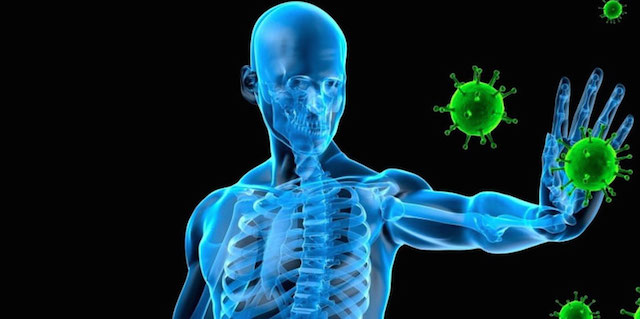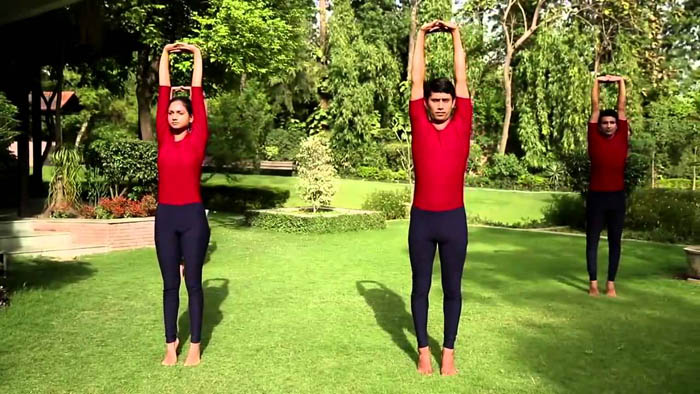The human immune system is an inbuilt system that helps us to keep disease-causing germs, bacteria and other harmful microbes at bay. It protects our body from such pathogens by identifying their type and fighting against them naturally, with the in-built mechanism. In scientific terms, it can be defined as a complex system comprising of cells and proteins that defends the body against infections and diseases. When the immune system fail to function it can lead to allergies, autoimmune disorders and immunodeficiencies. It is said to have an intelligence of its own where it identifies the microbes that enter the body to defeat it accordingly. And, lest the microbe tries to re-enter the body it can stop it on its tracks so that it can cause no further harm by attaching and multiplying. Since the immune system plays a major role in helping maintain our health and sustenance, we must work towards enhancing its performance by consuming healthy food, making positive lifestyle changes and boosting it through natural means. In this article, we will discuss how yoga can help boost our immunity.

What Comprises the Human Immune System
Let us take a detailed look at the different parts of the immune system:
- White Blood Cells – White blood cells are part of the lymphatic system and they move throughout the body hunting for harmful microbes to attack and destroy. They are an important part of the immune system.
- Complement System – this part of the immune system is made up of proteins and their task is to complement the work carried out by the antibodies.
- Antibodies – the work of the antibodies is to identify the antigens on the microbes and then fight them off of the human system. Many cells, proteins and chemicals actively part-take in this destructive attack towards the microbes and the toxins they produce.
- Lymphatic system – This part consists of a delicate tube-network that runs throughout the body consisting of lymph nodes, lymph vessels and white blood cells. They perform a series of important roles of the immune system.
- Spleen – The function of the spleen is to make the components required to fight diseases, removes damaged red blood cells as well as it acts as a filter that gets rid of microbes.
- Bone marrow – The function of the bone marrow is to produce the RBCs to transport oxygen, the WBCs that fights infections as well as produce the platelets required for our blood to clot.
- Thymus – This part actively monitors and filters contents of the blood and also produces WBCs known as T-lymphocytes.
Why Is It Important To Boost The Immune System
Every day we come into direct or indirect contact with bugs and microbes of all sorts. It could be transmitted to us through people we meet daily, through pets, at the workplace, the outdoor environment at large, you name it! A person with a healthy immune system may surpass any threat from any bug easily thanks to the invisible yet active fight their body puts up against the diseases causing germs. However, when an unhealthy person comes in contact with the same germs it could create havoc in their lives and even end up being fatal to them. So it is very important to boost one’s immune system so the body can naturally fight diseases for the person to lead a healthy, happy life.
Different Types of Yoga Poses To Boost Immunity
Mentioned below are 5 yoga poses that helps to boost our immune system:
Tadasana

- Stand straight and join the feet together with toes touching and heels slightly apart. Hands to be placed alongside the body.
- Tighten the thigh muscles. Lift the knee caps ensuring the lower part of the stomach is not hardened.
- Lift the ankles and make sure the inner arches are tightened.
- Throw focus on your ankles, thighs, spine slowly going upwards to the neck and head as if an invisible energy is passing through them. Gently turn the upper thigh inwards and stretch the tailbone downwards. Gently lift the pubis closer to the navel area.
- Stare straight ahead. Inhale and stretch the chest, arms and shoulders upwards.
- Be aware of the way the body is stretching from the feet up to the head. Stay in position and then breathe out and release the pose.
Avoid this pose in case of low BP, insomnia, headache.
Vrikshasana
- Stand straight dropping both arms along the side of the body.
- Bending the right knee slightly, place the right foot as high as possible on the left thigh ensuring the sole is kept firmly flat.
- At this stage, the left leg needs to be straight. Breathe in and out, and maintain the pose in balance.
- Breathe in gently raising the arms above the head, bringing them to form the ‘namaste’ pose.
- Stare straight ahead and maintain the gaze. Try to balance the body. The spine should be kept straight. Breathe in and out and with each exhalation, the body should be able to relax more.
- Bring the hands down gently releasing the right leg.
- Resume the initial bit of the pose standing straight.
- Repeat the above steps with the left leg.
Avoid the pose if suffering from insomnia or migraine.
Utkatasana
- Stand straight placing the feet slightly apart.
- Then stretch both arms forward keeping them straight, with the palms facing down. Elbows should also be straight.
- Gently bend both knees pushing the pelvis like you would when sitting on a chair.
- Relax and imagine as if you are sitting on a chair reading a magazine. Try to bring comfort in the pose doing so. At this stage, both hands should be parallel to the floor.
- Lengthen the spine and stay focused on the pose. Relax and calm the mind smiling.
- Hold the pose for about a minute.
- Gently sit in sukhasana.
Avoid this pose in case of insomnia, arthritis, damaged ligaments, chronic knee pain, ankle pain, headache and low BP. This pose should strictly be done under the guidance of an instructor.
Bhujangasana
- Lie down on the stomach such that the hands are placed on the side and the toes are in contact.
- Move the hands to the front placing them at shoulder-level with palms placed on the floor.
- Gently placing the body-weight on both palms breathe in and raise the head and the upper part of the body. The elbows should be bent.
- The neck should be pulled slightly backward. The shoulder blades should be firm and the shoulders shouldn’t touch the ears.
- Press down the hips, thighs and feet.
- Hold this pose for upto 30 seconds breathing normally. Over time the pose can be held for upto 2 minutes.
- Slowly bring the hands back to the sides. Bring the forehead in contact with the ground placing the hands under the head. Gently rest the head to one side and breathe.
Avoid the pose if suffering from back injury, hernia, headache, if having abdominal surgery and if pregnant.
Trikonasana
- Stand straight keeping the legs apart to about 3.5 to 4 feet.
- The right foot should be placed at 90 degrees with the left foot placed at 15 degrees.
- The centres of the right heel and the arch of the left foot should be aligned. The entire body weight should be balanced equally on both feet, both of which need to be pressing the ground.
- Breathe in and breathe out. Bend the body to the right from below the hips making sure the waist is kept straight. The left hand should be lifted up and the right hand should b touching the ground both forming a straight line.
- The right hand can be rested upon the ankle, the shin or next to the right foot on the floor depending on the comfort level of the person. The sides of the waist should be kept straight.
- The left-arm should be stretched facing the ceiling aligned with the top part of the shoulder. The head can be left neutral. it can also be turned to the left staring at the left palm.
- At this stage, the body should be bend sideways with the chest and pelvis wide open.
- Stretch maximum taking deep, long breaths, making sure to balance and relax the body.
- Breathe in and stand up. Then drop both arms to the sides and keep the feet straight.
- Repeat the above steps with the left leg.
Avoid the pose if suffering from low BP, headache and diarrhea.
Conclusion
Yoga helps to get rid of the stagnant energy within our cells and tissues through stretching, deep breathing and muscle-relaxing exercises. It encourages the body to de-stress, improves blood flow and aids in removing harmful toxins thereby strengthening the immune system to fight sickness effectively. Our immune system can naturally fight diseases but it is upto us to nourish and nurture it to ensure a continued smooth functioning to suffice a lifetime. Apart from eating a healthy diet, getting adequate sleep and leading a healthy lifestyle by stopping smoking and alcohol consumption as well as consuming all-natural health supplements like Immunity 911 also helps to boost one’s immune system. The better love and care we shower upon our health the better it can serve us and that’s what as humans we should all make a positive effort towards.